Spectroscopic techniques
At the laboratory of adsorption and catalysis there is different equipment available for analysis and testing of samples. Spectroscopic techniques are used for the determination of the nature of the chemical bonds in a sample.
The different spectroscopic techniques available are:
Fourier transform infrared spectroscopy (FTIR)
Purpose:
Infrared spectroscopy is used to obtain information about the different bonds between the atoms in a material. Interpretation of the position and width of the different IR-peaks can lead to important structural information.
Two types of FT-IR set-ups are generally used:
- TRANSMISSION FT-IR: The infrared spectrum of a sample is collected by passing a beam of infrared light through the sample. Examination of the transmitted light reveals how much energy was absorbed at each wavelength. The obtained spectrum has accurate peak positions and a high resolution.
- DRIFT: In this set-up, the diffuse reflected light is collected instead of the transmitted radiation. This technique allows conversion to kubelka-munk absorbance, resulting in semi-quantitative analysis.
In-situ IR techniques are used to study the formation and/or structural changes of material in real time, often to understand the reaction mechanism better.
Equipment:
FT-IR spectra are measured on a Nicolet Nexus 6700 FT-IR spectrometer. It uses a mid-IR source (400-4000 cm-1), a KBr-beamsplitter, a He/Ne laser and a Michelson interferometer, and is purged with a dry air flow. It has a MCT-B and a DTGS detector. It is also possible to measure a near-IR spectrum by using the CaF2 beamsplitter (of the FT-Raman bench) in the Nicolet Nexus FT-IR spectrometer.

Accessories:
1. Drift cell
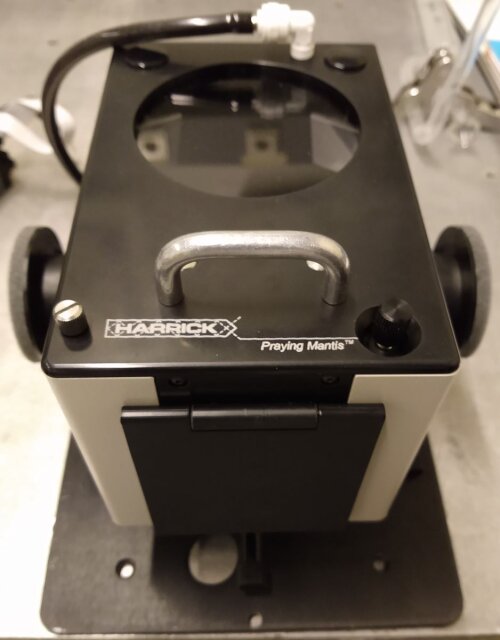
2. Transmission cell

3. In-situ drift cell
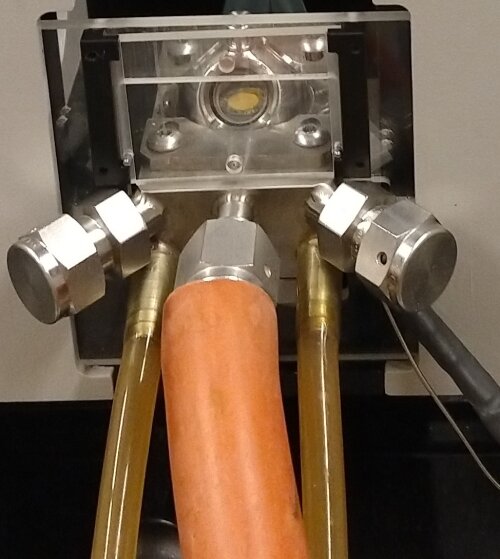
4. Home build in-situ transmission cell
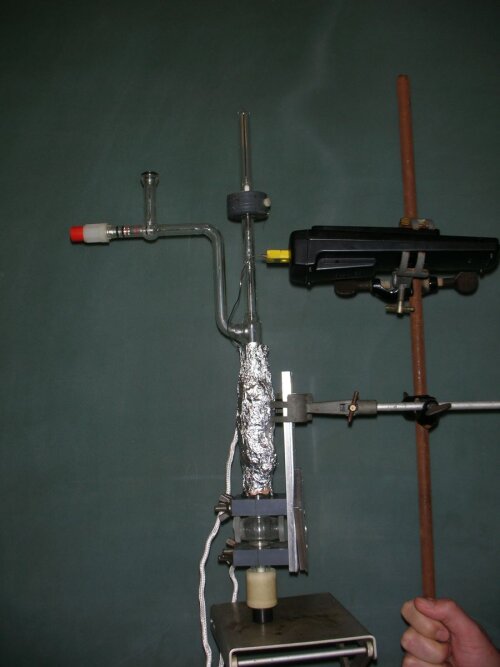
Raman spectroscopy (RAMAN)
Purpose:
Raman spectroscopy is used to determine different types of bonds between atoms in a structure. Analogues to FT-IR spectroscopy, structural information can be obtained. However, Raman is considered as complementary to IR spectroscopy, since Raman can also measure molecules without a permanent dipole.
Equipment:
Raman spectra are measured on a Horiba Spectroscopy – XploRA PLUS V1.2 MULTILINE Cofocal Raman microscope, including main parts:
- 532 nm laser kit including air cooled solid state laser (532 nm/25 mW)
- 785 nm laser kit including air cooled solid state laser (785 nm/100 mW)
- XY motorized stage, X = 75mm Y = 50 mm for microscopes; XY specifications: minimum step size = 10 nm, repeatability = 1 µm, resolution: 100 nm
The micro-Raman allows the characterization of mixed samples, by acquiring multiple spectra in different spots, for a complex analysis. The 532 nm laser can measure a broad range of materials and gives a good correlation with the literature. The 785 nm laser is used for samples that are not suitable to be measured with 532 nm laser (due to fluorescence effect) and for the samples that are specifically tuned to be active in this domain. Surface-enhanced Raman spectroscopy (SERS) measurements are also possible with the current setup.
Accessories:
Horiba Spectroscopy Database – KnowItAll for Horiba Edition: spectral searching and analysis software package.
The Database contains more than 1750 spectra for polymers, inorganics, inks/pigments, semiconductors and biomaterials. Furthermore, a very fast analysis of the spectra is possible with the software, making it a very powerful tool for materials characterization.
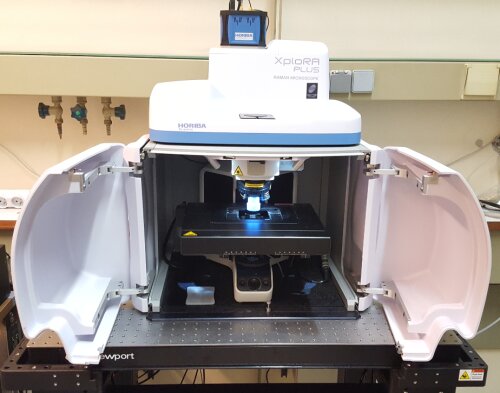
Photo acoustic spectroscopy (PAS)
Purpose:
Photo acoustic spectroscopy (PAS) is a special kind of infrared spectroscopy which is performed under an inert He atmosphere. The advantage is that the technique is water-free, so this means that the samples are not contaminated with water. Therefore, the surface hydroxyl groups can be accurately determined accurately with this technique.
Equipment:
Measurements are obtained on a Nexus spectrometer bench placed in an ultra dry air box, equipped with a MTEC 300 PA detection cell flushed with zeolite dried Helium.
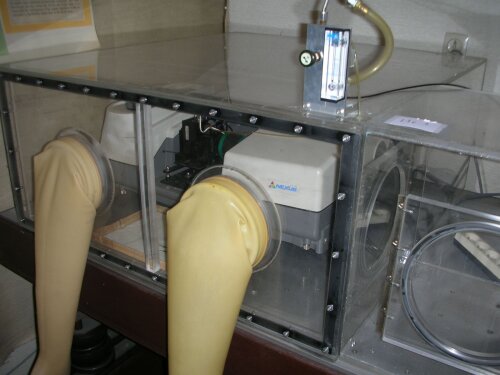
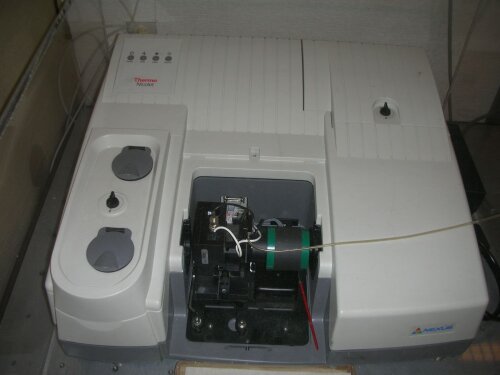
Ultraviolet–visible spectroscopy (UV-VIS)
Purpose :
Determination of (a) the concentration of organic molecules in solution (dyes, fenol,…) which are degraded by a photocatalyst, and (b) the coordination state of a transition metal (tetrahedral, octahedral or polymeric) in metal containing, solid catalysts.
Equipment :
Thermo-electron evolution 500 (double beam) is used to measure liquids. For the solid state measurements a UV-DR cell (RSA-UC-40) is placed inside the UV-VIS apparatus.

Sorption techniques
Sorption techniques are used to examine the surface of a sample (surface area, pore volume, pore size distribution, acidity, ...).
Both automated as manual sorption equipment is available at LADCA.
Automated - sorption
Purpose:
Evaluation of the porosity and surface characteristics (surface area, pore size distribution, pore volume).
Equipment:
- AUTOSOSORB-1-MP:
- 1 sample station, 2 integrated degas units
- Turbomolecular pump (measurement of P/P0 values down to 10-5 and pore size distributions until 1 nm Ø)
- Adsorbates: Argon (87K)

- QUADRASORB SI:
- 4 sample stations
- Rotary vane pump (measurement of P/P0 values down to 10-2)
- Adsorbates: Nitrogen (77K)

- AUTOSORB-IQ-C: Combined volumetric and dynamic sorption system
The Autosorb-iQ-C can be used for various volumetric measurements, being:
- Physisorption isotherms
- Two cycle adsorption isotherms (TCA) - chemisorption
- Vapor measurements – chemisorption
or for various dynamic measurements:
- TPD-Temperature programmed desorption
- TPR-Temperature programmed reduction
- TPO- Temperature programmed oxidation)
or for the combination of both.
Technical aspects:
- 1 sample station, 2 integrated degas units
- Turbomolecular and membrane pump (measurement of P/P0 values down to 10-5 and pore size distributions until 1 nm Ø)
- Manifold can be heated until 303 K
- Adsorbates: Nitrogen (77 K), Krypton (87 K), gasses (323 K - 1273 K), vapors (323 K - 1273 K)

- CHEMSTAR TPx Chemisorption analyzer
The Chemstar can be used for:
- TPD-Temperature programmed desorption
- TPR-Temperature programmed reduction
- TPO-Temperature programmed oxidation
- Pulse-titration: quantitative analysis
Technical aspects:
- 1-sample station
- heating until 1470 K
- 4 treatment gasses, 4 carrier gasses
- The Hiden HPR200 quadrupole mass spectrometer can be connected to separate and identify eluating gassen until 300 u.
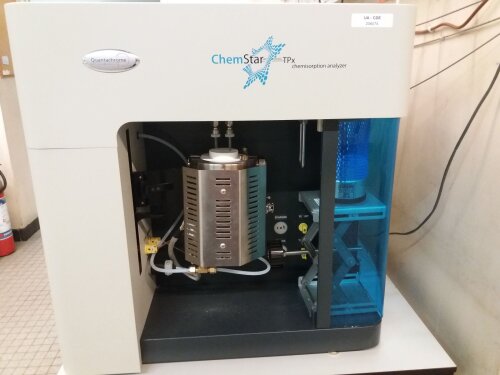
Accessories :
- AUTOSORB-6-TURBODEGASSER
- 6 degas units
- Turbomolecular pump

Manual sorption system
Purpose:
- Manual sorption measurements with gasses and the vapour pressure of volatile solvents.
- Modifications of porous substrates, e.g. titration of acid sites by NH3 chemisorption, modification of poresize/-entrance with silanes and boranes.
Equipment:
Home-built volumetric sorption system
- Rotary vane pump and turbomolecular pump
- Pressure transducer range: 1–1000mbar (resolution 0.1mbar)

Elemental analysis
Elemental analysis techniques can be used for the qualitive (determining what elements are present) and quantitive (determining how much of each are present) analysis of samples.
The different elemental analysis equipment available at LADCA are:
Total Organic Compound (TOC) analyser
Purpose:
- Water quality control of industrial effluent, rivers,… (Industrial scale)
- Supplying additional information concerning the degradation process of organic molecules in a photocatalyst test-setup (academic scale)
Equipment:
SHIMADZU TOC-Vcph. TOC values are obtained by measuring TC (total carbon) and IC (inorganic carbon) and substracting the IC concentration from the TC concentration. TC is measured by oxidation of the injected sample to carbondioxide by a catalyst-filled combustion tube heated at 680°C. IC concentrations are measured by acidifing the sample. The generated carbondioxide is measured with a non-dispersive infrared detector. To protect the detector from damage, a halogen and sulphur scrubber are installed.

Accessories:
Gas injection kit. This equipment allows analysis of very small volumes (~50 µl) of a gas or liquid and can only be performed by manual injection with a high precision syringe.
Thermogravimetric analysis
Using thermogravimetric analysis the weigth of a sample can be monitored as a function of temperature.
Thermogravimetric Analysis (TGA)
Purpose
Thermogravimetric Analysis (TGA) is a technique for measuring changes in mass as function of temperature. This technique is used to determine the composition of substances and finds application in the chemical and pharmaceutical industries. From TGA curves, data on the kinetics and thermodynamics of the various chemical reactions, reaction mechanisms, reaction intermediates and final reaction products are obtained.
By connecting the thermogravimetric analyser with the Hiden HPR quadrupole mass spectrometer eluating gasses can be identified until 300 u.
Equipment
Mettler Toledo TGA/DSC 3+. Isothermic and dynamic temperature programmes are possible. Due to the presence of 6 thermocouples calorimetric data can be obtained.
- temperature range: 20°C - 1100°C
- resolution: 1 ppm
- sample mass: 1 - 250 mg
- possibility to switch between different gasses and flows (Ar, N2, O2, Air)
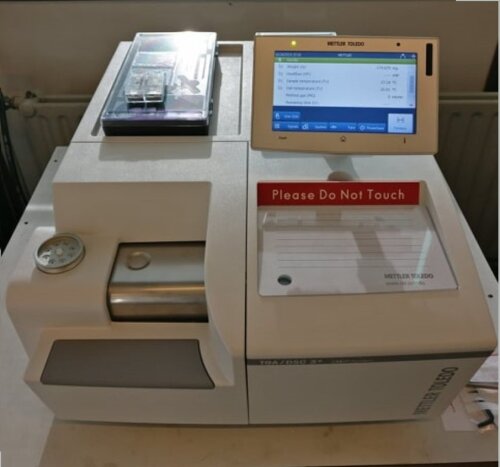
Catalysis
At LADCA there is different equipment available for the catalytic testing of samples:
Photocatalytic lamps
Purpose:
The photocatalyst can be illuminated with light of different wavelengths to evaluate it’s photoefficiency under visible- and UV-light.
Equipment:
UV light:
Mercury lamp Sylvania 100 watts (365 nm), UVP lamp housing and transformer base

Visible light:
TL-D 18W/16 yellow SLV (500-700 nm)
TL-D 18W/18 blue SLV (400-550 nm)

- Combined UV/visible light
US800 - Sunsimulator, Xenon lamp, filter WG320 for visible spectrum, filter UG1 or UG11 for UV spectrum.
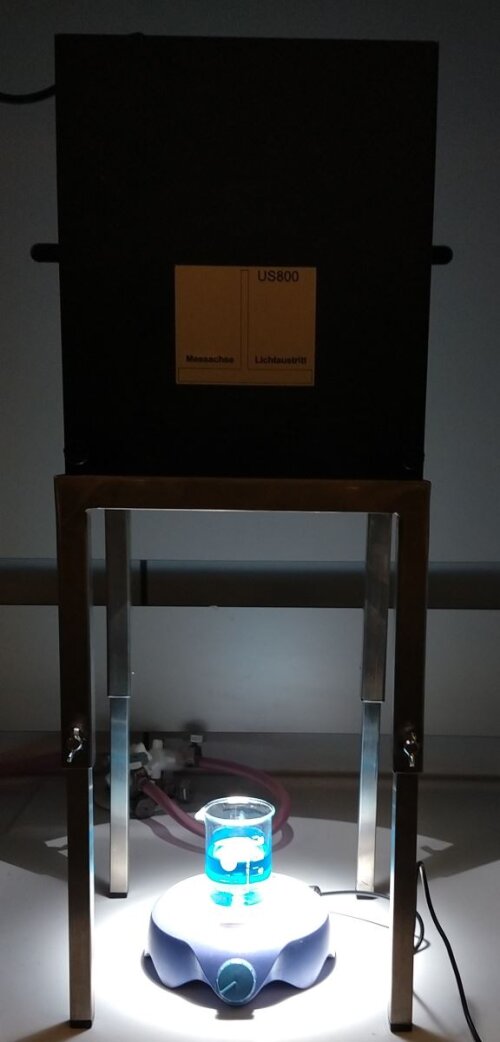
Reactors
Purpose :
The reactors are used to investigate the catalytic activity of materials in gas reactions under influence of different energy sources.
Equipment :
- automotive reactor:
This gas reactor simulates the exhaust of cars.It is being used to research on the catalytic activity of materials in substitution for the current Platina Group Metals.
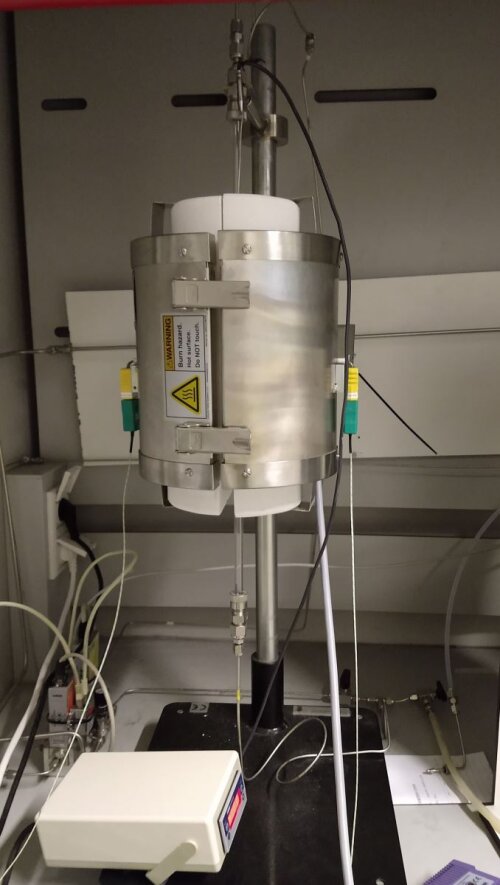
- plasma reactors
Plasmareactors are used to test the calatytic activity of materials during gas reactions under influence of plasma energy.
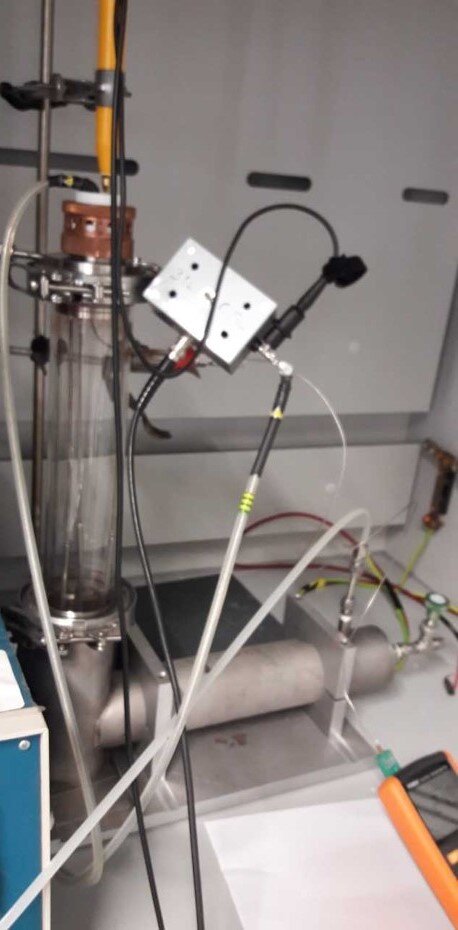
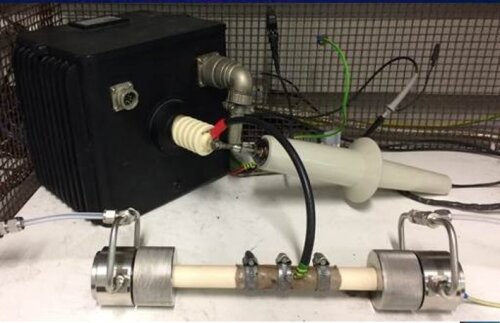
- Photocatalytic reactors
With these reactors the photocatalytic activity of materials are tested. This is done, for instance, by looking into the rendement of the reduction of CO2.
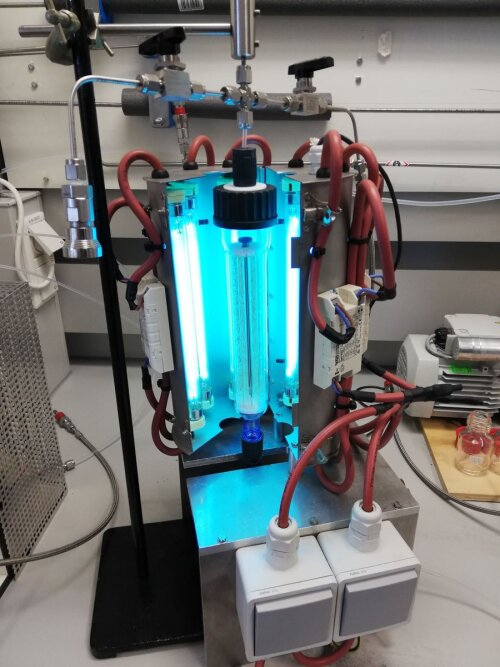
- Separation and identification before and/or after the reactions are done gas chromatographicaly, mass spectrometric or via gas sensors.
Gasdetection techniques
The next gas detection techniques separate and/or identify the reagens and reaction products. They are connected to the reactors, the Chemstar or the thermogravimetric analyser.
Gas chromatography
Purpose
Gas chromatography is used to separate and identify permanent gasses, carbon dioxide, lower carbonhydrates and their isomers, lower oxigenated carbonhydrates, before and after the reactors.
- two Trace 1300/1310 gas chromatographs from Global Analyser Solutions. Chromeleon is the data system that controls the gas chromatographs and the data acquisition.
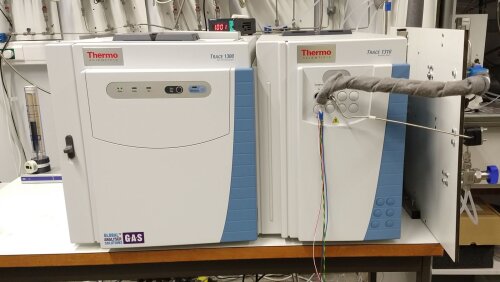
- one Compact gas chromatograph from Interscience. The CompactGC editor program controls the gas chromatograph. The Agilent EZChrom Elite data system controls the data acquisition.
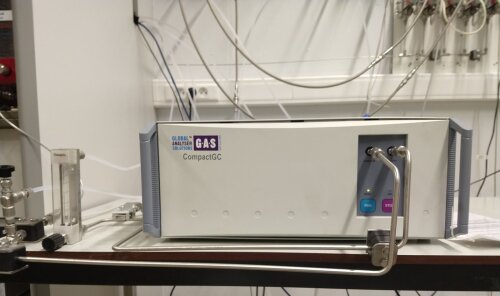
- one Agilent 490-PRO Micro gas chromatograph. The Agilent EZChrom Elite data system controls both the gas chromatograph an the data acquisition.
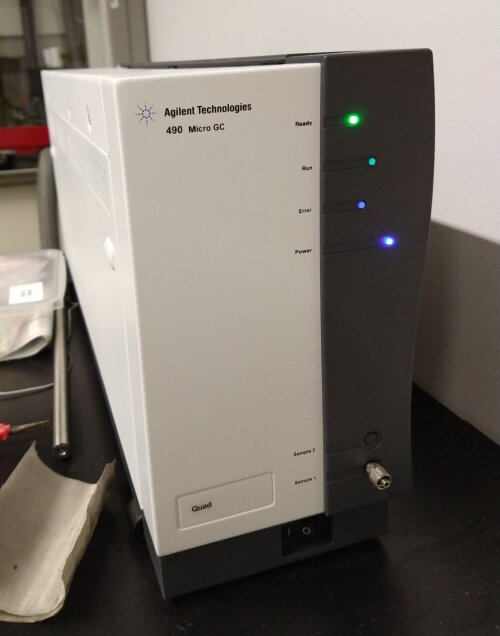
Mass spectrometry
Purpose
The mass spectrometer is used to separate and/or identify gas molecules with a molecular mass until 300 u. The equipment can be connected to the outlet of the reactors, of the Chemstar, of the thermogravimetric analyser.
Equipment
HIDEN HPR-20 mass spectrometer. Two different detectors are used:
- Faraday detector with a detection limit of 10-11 Torr.
- Electron multiplier detector with detection limit between 10-14 and 10-13 Torr.
Three different softwares are used dependent on the kind of measurement:
- MASSoft: qualitative
- QGA software: quantitative
- EGA software for measurements connected to the Chemstar and the thermogravimetric analyser

Gas sensors
Purpose
Gas sensors are used to detect one single gas. More specific, a gas sensor for quantitative detection of CO, NO and CO2 are available. They are connected to the outlet of the reactors or to the Chemstar.
Equipment
- Dräger Polytron CO detector
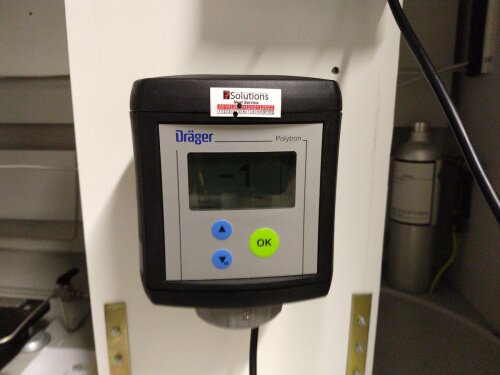
- GDS technologies NO gas sensor
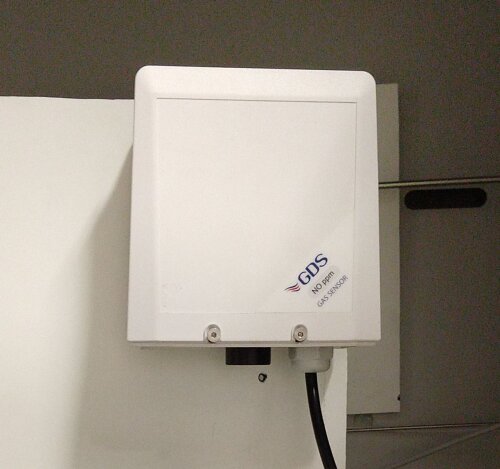
- GDS technologies CO2 gas sensor